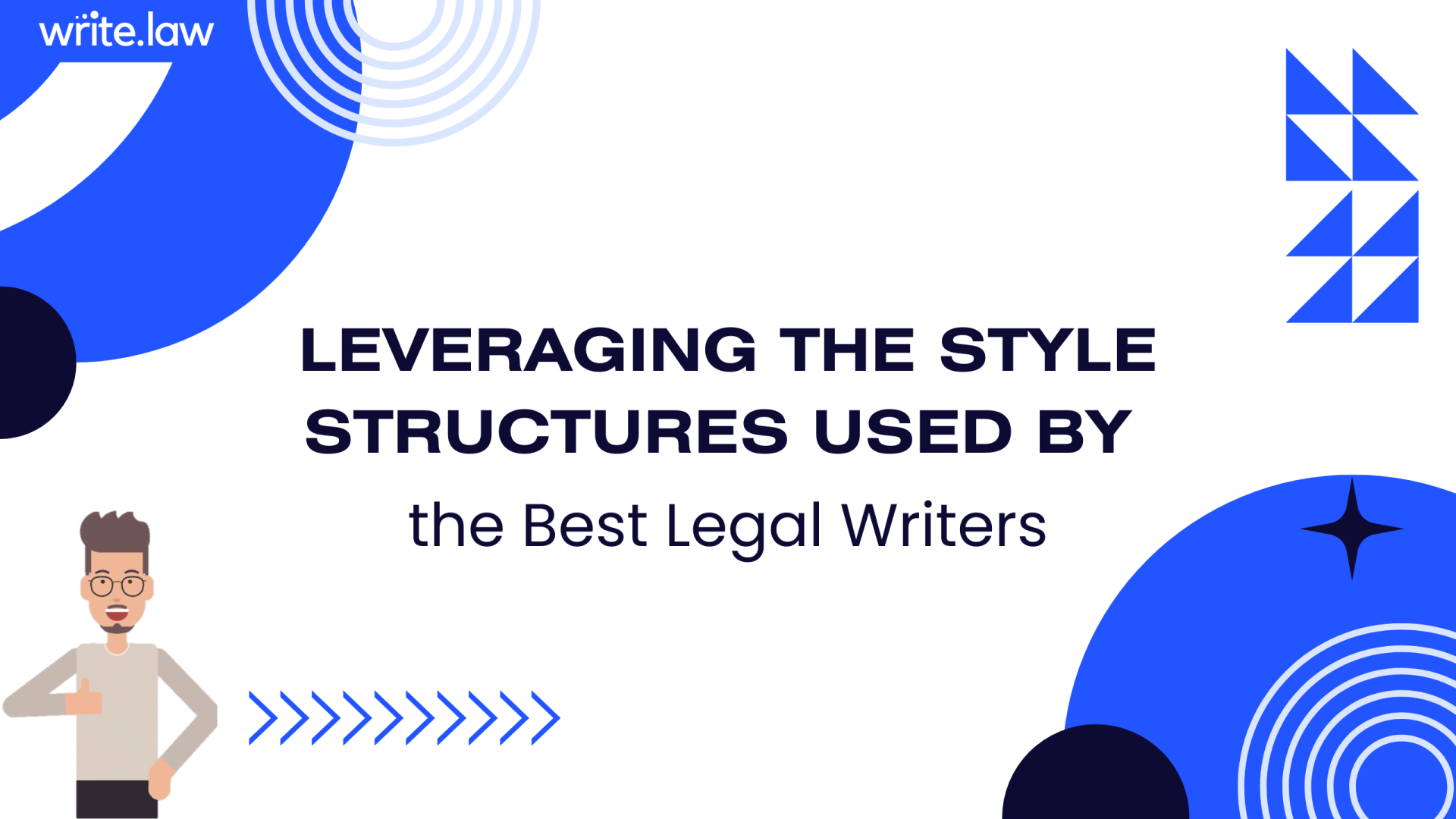writing
Leveraging the Style Structures Used by the Best Legal Writers
Discover how top legal writers use structure, rhythm, and style to craft persuasive arguments—and how you can apply the same techniques in your own writing.
-
Joe Regalia

Legal writing doesn’t have to be dull or forgettable. Thanks to the cognitive principle known as the Von Restorff effect, readers naturally recall information that stands apart from the everyday background noise. Think of exceptional legal style as your rhetorical superpower, ideal for emphasizing critical points, key arguments, favorable facts, or essential rules.
Great legal writers have long recognized this truth. Their prose consistently features powerful stylistic techniques like:
- Repetition
- Parallelism
- Balanced structures
- Carefully controlled rhythm
But you don’t have to simply admire this approach—you can adopt and master it yourself.
Let’s explore how celebrated legal writers use these style techniques effectively, and how you can practice incorporating them into your own writing.
Below is a curated collection of some sample style structures from our library here at Write.law, complete with clear explanations and examples from public filings, speeches, and judicial opinions. Approach this guide as both inspiration and practical toolkit. Choose structures that resonate with you, and practice integrating them into your legal writing to elevate it from ordinary to extraordinary.
1. Word and Phrase Echoes
Echoing words or phrases can create rhythm, emphasize points, and improve memorability.
Starting Line Echo (Anaphora). Repeatedly start sentences or clauses with the same word or phrase to drive home your point:
“Injustice anywhere is a threat to justice everywhere. Injustice in the courtroom undermines judicial integrity. Injustice in our laws creates a society of inequality.”
Exact Switch Back (Antimetabole). Reverse a phrase in successive clauses to highlight contrasting ideas:
“It is not the evidence that determines the case, but the case that determines the evidence.”
Bookend Boomerang (Epanalepsis). Start and end a sentence or clause with the same phrase to reinforce an idea:
“The law, in all its majestic equality, prohibits the rich as well as the poor to sleep under bridges.”
2. Location Structures
These structures play with sentence order and syntax to achieve rhetorical impact.
Two-Phrase Flip (Chiasmus). Reverse the grammatical structure of phrases for dramatic effect:
“The law punishes those who break it, but also breaks those it punishes.”
Parallel Pendulum (Parallelism). Use similar grammatical structures to emphasize connected ideas:
“The law protects the innocent, punishes the guilty, and guides the unsure.”
Tailcoat Adjective (Anastrophe). Place adjectives after nouns for poetic or dramatic emphasis:
“Evidence, compelling and irrefutable, was presented by the prosecution.”
3. Word and Phrase Structures
Manipulating specific words or phrases can convey emphasis, urgency, or rhythm.
And-and-and Avalanche (Polysyndeton). Use multiple conjunctions deliberately to create a sense of overwhelm or emphasis:
“We have facts and evidence and testimonies and documents that all point to the same conclusion.”
Collected Fragments. Use fragment sentences connected by a final summarizing sentence to create dramatic emphasis:
“A skilled litigator. A fierce advocate. A guardian of justice. Mr. Smith is all these things and more.”
True, But Not. Make a small concession followed by a significant counterpoint to emphasize the strength of your main argument:
“True, the defendant was present at the crime scene. But so were dozens of other potential suspects.”
4. Sound Structures
Harnessing the auditory appeal of language can help your writing resonate more deeply with readers.
Alliteration. Repeated consonant sounds create rhythm and memorability:
“Breach of contract claims can lead to bitter battles in business.”
Vowel Velvet (Assonance). Repeated vowel sounds for rhythmic and soothing effect:
“In the pursuit of truth, we must scrutinize each clue.”
5. Concept Style Structures
These techniques focus on conceptual framing to enhance clarity, emphasis, and persuasion.
Clarification Contrast. Present negatives first to clarify and emphasize the positive point you want to make:
“This case isn’t about defamation; it’s about systematic harassment.”
Question & Capture (Hypophora). Pose and immediately answer a rhetorical question to direct readers' attention:
“What is our duty as lawyers? To uphold the law and seek justice.”
Anthropomorphic Artistry (Personification). Attribute human characteristics to abstract ideas or objects to create relatability and vividness:
“Justice, blindfolded and unbiased, holds the scales that measure our deeds.”
How to Practically Apply These Techniques
Let’s practice briefly. Suppose you want to refine a prominent heading in your brief that currently reads:
“The minors should be raised by both parents regardless of how other children are situated.”
Start with Clarification Contrast to heighten emphasis:
“The children have a Constitutional right not just to one parent, but to both parents…”
With a simple structure, you transformed an ordinary heading into a powerful rhetorical statement.
Now it's your turn. Select a style structure that appeals to you and spend just a few minutes practicing it in your writing today. Over time, mastering these techniques will transform your prose, ensuring readers not only remember your words but respect and act upon your ideas.
Joe Regalia
Write.law co-founder Joe Regalia combines his experience as both practitioner and professor to create exciting new ways to teach legal skills. Learn more about Joe
Sign up for our newsletter!
Get writing and other legal practice tips delivered to your inbox every other Thursday.
Thanks for joining!
We’ve sent a welcome email to your inbox.
We’ve sent a welcome email to your inbox.
We're on a mission to make legal skills training engaging, effective, easy to use—and accessible to all.


